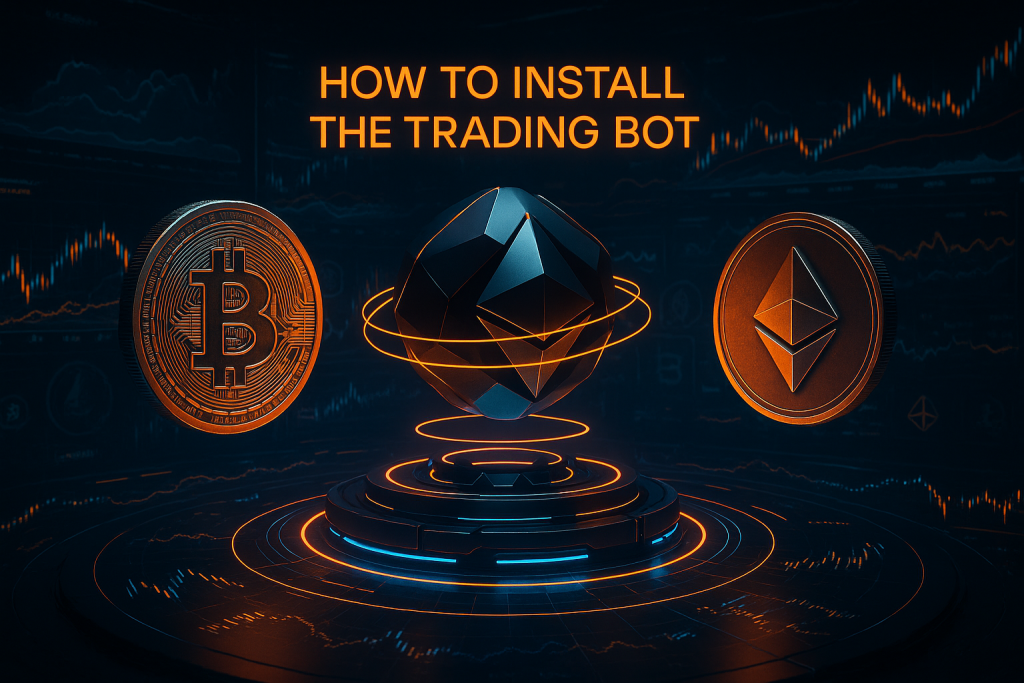How to install the trading bot

In today’s digital age, trading has long since moved beyond its traditional form. Increasingly, it’s not humans but algorithms – trading bots – that handle financial operations. These electronic assistants can trade around the clock, without fatigue, distraction, or emotion. However, for a bot to become truly effective, it must be installed and configured correctly. This process calls for attention to detail, technical literacy, and a sound understanding of trading basics.
The first step in setting up a trading bot is selecting the right software. There’s a wide range of platforms offering ready-made solutions. Some bots are fully automated, while others require manual configuration. Before installing, it’s essential to read user feedback, compare features, and make sure the bot is compatible with your chosen exchange – for instance, Binance, Bybit, or Kraken.
Once you’ve chosen a bot, the next stage involves registering on the platform and downloading the software. Many bots are web-based, while others are available as desktop or mobile applications. Installation is usually straightforward: download the archive, unpack it, and run the setup file. For web-based bots, it’s typically enough to create an account and log in.
Next comes a critical technical stage – connecting the bot to the exchange through API keys. These act as a “bridge” between the bot and the trading platform, allowing it to access data and place trades on your behalf. The exchange generates an API key, where you can manually assign permissions: read-only, trading access, or disable withdrawals for added security. These keys are then entered into the bot’s interface.
The most important stage follows – configuring the trading strategy. Depending on the bot’s functionality, users can choose a pre-set strategy (e.g., scalping, grid trading, arbitrage) or build one manually: defining entry and exit conditions, stop-loss and take-profit levels, loss limits, and other parameters. Some bots even support backtesting strategies using historical data, helping you evaluate performance in advance.
After configuration, the bot should be launched in test or demo mode. This is a vital step: it allows the program to simulate live trading without risking real funds. Here, traders can identify logical errors, overtrading, or poor reactions to market movements.
Only after successful testing should the bot go live. Even then, it requires continuous monitoring. Markets evolve daily, and what worked yesterday might fail tomorrow. Installing a trading bot, therefore, isn’t a one-off technical task but the beginning of ongoing management of a tool that can generate both profits and losses.
In short, setting up a trading bot is a process – from selecting the right platform to connecting, configuring, and testing. A successful setup demands not only technical competence but also a trader’s insight. After all, even the smartest bot is just a tool – and its results depend entirely on the person who wields it.
Category news: Product and Bot Features
-

Bot for trading goods
In an era of rapidly advancing digital technology, businesses are increasingly turning to automated solutions that simplify and accelerate workflows. One such solution is trading bots – programs capable of replacing or complementing human labor in the sales process. Their integration into product trading offers a number of substantial advantages that significantly enhance business efficiency. […]
-

Real-Time Trading Bot
Real-time trading bots connect directly to trading platforms via API. They receive up-to-the-second data on prices, volumes, supply and demand, and use predefined algorithms to execute trades. These algorithms can be simple – for example, buying when the price drops and selling when it rises – or highly sophisticated, incorporating technical analysis, artificial intelligence, or […]
-

ETF Trading Bot
Thanks to rapid technological development, investing is gradually shifting from a domain reserved for professionals to an area of widespread public interest. Exchange-traded funds (ETFs), in particular, have grown extremely popular, offering diversification, transparency, and ease of purchase. Against this backdrop, a new tool is emerging – an ETF trading bot. ETF funds, or exchange-traded […]
-

Algorithmic trading bot
The use of trading bots in algorithmic trading has become a true breakthrough in the financial world. These intelligent systems offer a range of significant advantages, which is why they are increasingly replacing manual trading and opening up new horizons for market participants. Algorithmic trading is a method of automated buying and selling of assets […]
Latest news
-

Bot for trading goods
In an era of rapidly advancing digital technology, businesses are increasingly turning to automated solutions that simplify and accelerate workflows. One such solution is trading bots – programs capable of replacing or complementing human labor in the sales process. Their integration into product trading offers a number of substantial advantages that significantly enhance business efficiency. […]
-

SHIB
SHIB, or Shiba Inu, is a cryptocurrency that emerged in 2020, inspired by the popular meme coin Dogecoin. It quickly caught the attention of the crypto community thanks to its extremely low price per token and a marketing strategy centered around social media and fan engagement. Although SHIB was initially conceived as a “joke,” its […]
-

Real-Time Trading Bot
Real-time trading bots connect directly to trading platforms via API. They receive up-to-the-second data on prices, volumes, supply and demand, and use predefined algorithms to execute trades. These algorithms can be simple – for example, buying when the price drops and selling when it rises – or highly sophisticated, incorporating technical analysis, artificial intelligence, or […]
-

ETF Trading Bot
Thanks to rapid technological development, investing is gradually shifting from a domain reserved for professionals to an area of widespread public interest. Exchange-traded funds (ETFs), in particular, have grown extremely popular, offering diversification, transparency, and ease of purchase. Against this backdrop, a new tool is emerging – an ETF trading bot. ETF funds, or exchange-traded […]

